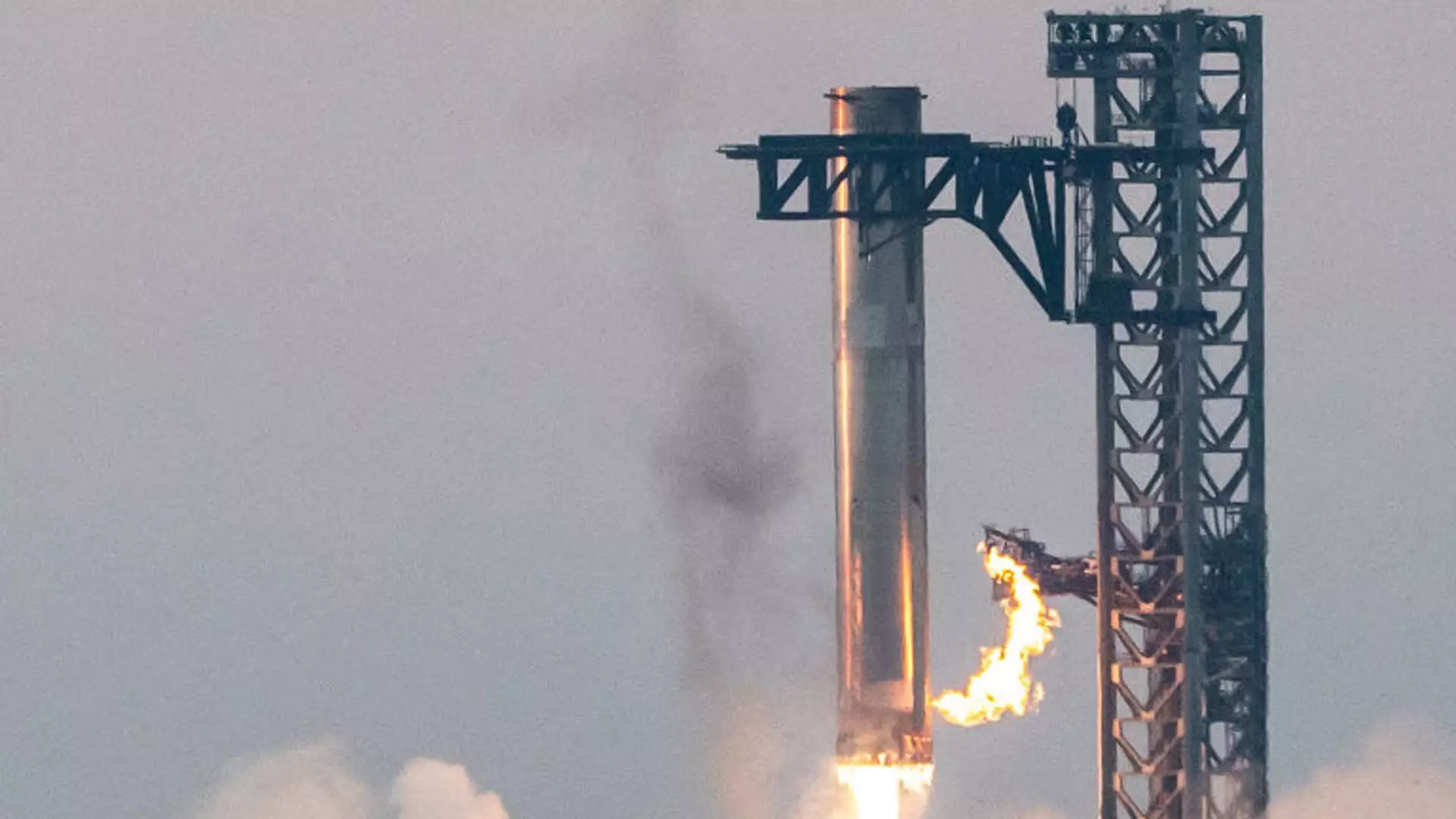On a remarkable Sunday morning, SpaceX embarked on its fifth test flight of the Starship rocket, marking a significant leap towards the realization of a fully reusable spacecraft. The launch, witnessed at 8:25 a.m. ET from SpaceX’s Starbase facility in Brownsville, Texas, showcased a dazzling achievement: the successful catch of the Super Heavy booster by the launch tower’s innovative “chopstick” arms. This event not only emphasizes the technological advancements made by SpaceX but also underscores the ambitious vision of Elon Musk’s company to revolutionize transportation beyond Earth.
Approximately seven minutes post-launch, the Super Heavy booster made a flawless return, landing safely on the launch tower. The excitement was palpable, with SpaceX communications manager Dan Huot expressing astonishment at the event’s success, stating, “What we just saw, that looked like magic.” Such enthusiasm from the SpaceX team highlights the immense effort and dedication involved in achieving this feat. This catch mechanism is viewed as a vital component in SpaceX’s pursuit of reusability, allowing for potential cost savings and efficiency improvements in future missions.
Integral to SpaceX’s progress has been the foundational support of crucial stakeholders, including NASA. The space agency’s administrator, Bill Nelson, lauded SpaceX’s accomplishments, emphasizing how consistent testing aids preparations for future lunar missions under the Artemis program. The culmination of efforts and strategies employed by SpaceX illustrates a clear roadmap toward an ambitious vision of conducting hundreds of Starship missions across a range of objectives, prior to utilizing this massive vehicle for crewed flights.
However, the path to this achievement has not been devoid of challenges. Despite the Federal Aviation Administration (FAA) granting launch licenses expediently, SpaceX’s management has publicly voiced dissatisfaction with the regulatory process. There were suggestions that unnecessary environmental assessments hindered their timeline, illustrating a tension between innovation and regulatory compliance that frequently plagues advanced aerospace projects.
SpaceX’s contractual partnership with NASA further emphasizes the significance of the Starship project. As part of the Artemis program, the Starship system is poised to play a pivotal role in returning humans to the moon—an endeavor that necessitates a robust, cost-effective shuttle capable of carrying both crew and cargo. With historical milestones marking the completion of multiple test flights since April of the previous year, each endeavor has yielded greater insights and improvements. The iterative design approach employed by SpaceX is foundational to its culture of innovation, showcasing an enduring commitment to learning and adaptation.
Standing as the tallest and most powerful rocket ever constructed, the Starship system represents a monumental engineering achievement. Fully assembled with its Super Heavy booster, the spacecraft reaches an astonishing height of 397 feet, featuring a diameter of 30 feet. The Super Heavy booster itself, towering at 232 feet, is equipped with 33 Raptor engines that collectively generate a staggering thrust of 16.7 million pounds. This is nearly double the thrust of NASA’s Space Launch System, highlighting the immense capabilities offered by SpaceX’s engineering prowess.
Starship, designed for both atmospheric flight and maneuverability in the vacuum of space, utilizes six Raptor engines—three for atmospheric use and three specifically engineered for space operations. As the rocket runs on methanol and liquid oxygen, the logistics involved in fueling its journey underscore the complexity and scale of such an operation. More than ten million pounds of propellant are necessary for a successful launch, emphasizing the significant logistical planning and preparation required for each mission.
The success of the fifth test flight and the innovative booster catch not only solidify SpaceX’s reputation within the aerospace industry but also serve as a beacon of hope for the future of space exploration. As humanity looks toward ambitious goals like crewed missions to Mars and sustainable lunar settlements, the achievements of the Starship rocket provide a foundation upon which these dreams can be built. With an eye on future missions, SpaceX is poised to lead a new era of exploration, one where access to space becomes as routine as air travel.
SpaceX’s relentless pursuit of innovation, alongside its strategic partnerships and engineering ingenuity, is setting the stage for a new chapter in the narrative of human exploration beyond our planet.


Leave a Reply